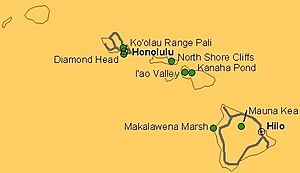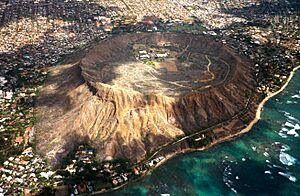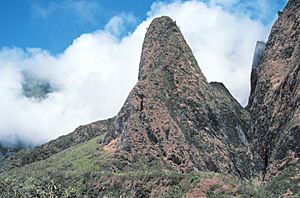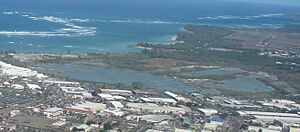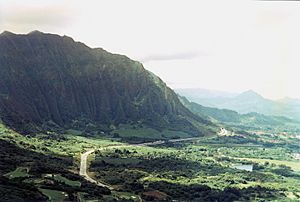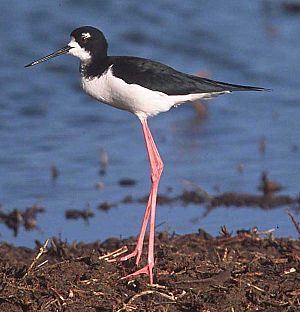List of National Natural Landmarks in Hawaii facts for kids
Hawaii is home to some truly amazing natural places! These special spots are called National Natural Landmarks. They are chosen because they show off the best examples of America's natural history. Think of them as outdoor museums, but instead of old objects, they protect incredible landscapes, unique plants, and cool animals.
These landmarks help us learn about how our Earth was formed and how nature works. They also protect important homes for wildlife. Let's explore some of Hawaii's most incredible National Natural Landmarks!
Contents
Hawaii's Amazing Natural Landmarks
Diamond Head
Diamond Head is a huge, cone-shaped hill made of volcanic rock. It stands tall right in the middle of Honolulu, a busy city. This landmark is a great example of a "cinder cone," which is a type of volcano that erupts ash and small rocks. Even though it's surrounded by city life, it reminds us of Hawaii's fiery volcanic past.
I'ao Valley
Located in Wailuku on the island of Maui, I'ao Valley is a stunning place. It features tall, jagged volcanic peaks that are covered in green plants. The valley is also surrounded by a thick, green rainforest. The most famous part is the "I'ao Needle," a towering rock formation that looks like a giant green spike. It's a beautiful example of how volcanoes and weather can shape the land.
Kanaha Pond
Kanaha Pond was named a National Natural Landmark in June 1971. It's a special place near Kahului on Maui. This pond has slightly salty water, which makes it a perfect home for many different birds. It's a very important wildlife sanctuary, especially for birds that need a safe place to live and raise their young.
Koʻolau Range Pali
The Ko'olau Range is a long mountain range on the island of Oahu. The "Pali" refers to its steep, dramatic cliffs. These mountains are actually what's left of an ancient shield volcano that has been worn down by weather over millions of years. The cliffs show amazing layers of volcanic rock and offer incredible views. Parts of this landmark are owned by the state and by private landowners.
Makalawena Marsh
Designated in June 1972, Makalawena Marsh is found in Kekaha Kai State Park in North Kona on the island of Hawaiʻi. This marsh is a vital home for many birds, including endangered ones like the Hawaiian stilt. Protecting places like Makalawena Marsh helps ensure these rare birds have a place to survive and thrive.
Mauna Kea
Mauna Kea became a National Natural Landmark in November 1972. This massive mountain, located near Saddle Road on the island of Hawaiʻi, stands over 11,000 feet tall above sea level. But if you measure it from its base on the ocean floor, it's actually the tallest mountain in the world! It's considered the best example of a "shield volcano" because of its gentle, sloping shape, like a warrior's shield. Both the federal government and the state own parts of this incredible landmark.
North Shore Cliffs
The North Shore Cliffs of Molokaʻi were recognized in December 1972. These cliffs are some of the tallest sea cliffs in the world! They are incredibly steep and have been shaped by the ocean and weather over a very long time. They are another amazing example of Hawaii's volcanic landscape being carved by nature. These lands are a mix of state and private ownership.


